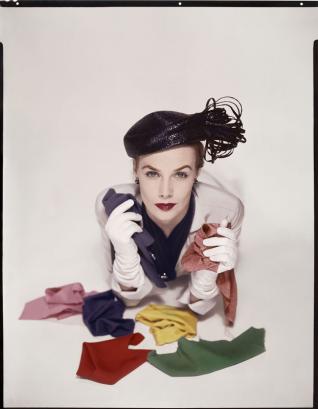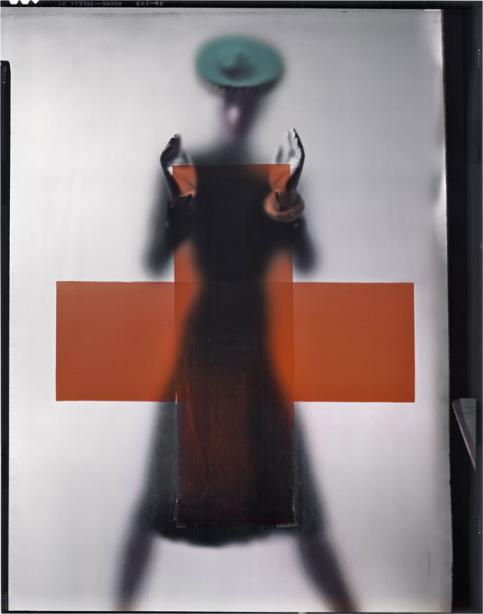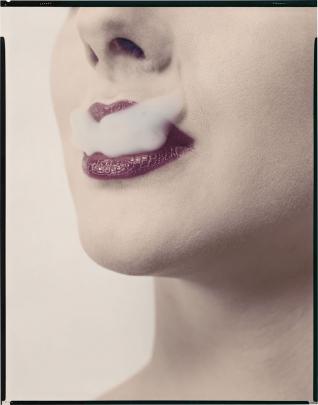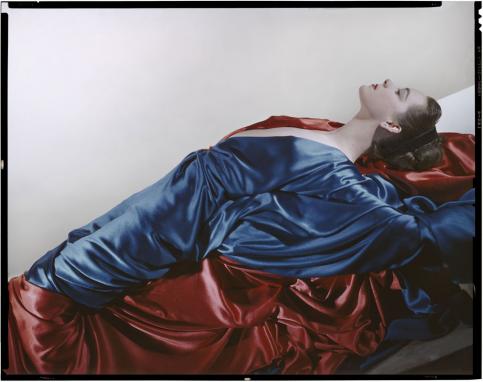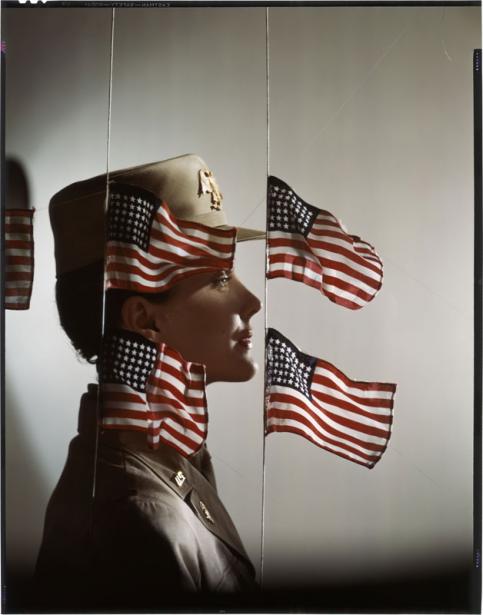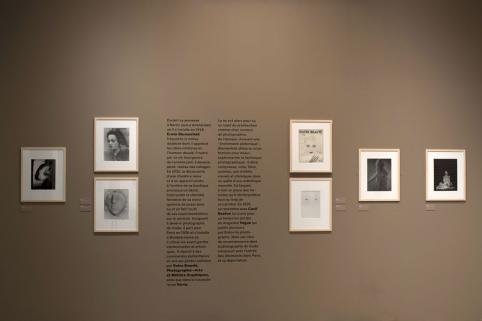It was in the United States after the war, in a context of economic growth and a buoyant and expanding press, that Erwin Blumenfeld’s humorous, inventive and personal work (1897-1969) flowered. Vogue
, Harper’s Bazaar
, Collier’s
, Cosmopolitan
, Life
, Look
, all of the big American fashion magazines hired him regularly over a fifteen year period, a photographer that Alexander Liberman admiringly called « the most graphic and rooted in art ».
For this exhibition, the photographer’s sheet-films that, sixty years on, have deteriorated for the most part, have been restored by the laboratory of the musée Nicéphore Niépce. A digital restoration process was used In order to give the photographs their original colours. The exhibition includes over one hundred modern-day shots, original press cuttings and vintage black and white photographs, and will showcase the reality of this little-known workshop collection of fashion and advertising photography.
Three years after his arrival in New York, Erwin Blumenfeld (1897-1969) is, in 1944, the most famous photographer around. According to the New York Times , he is « an outstanding leader in imaginative photography », and one of the highest paid ! This seemingly remarkable success story proves, if necessary, that post-WWII photography was an alliance of creativity and economic factors.
Erwin Blumenfeld owes this american fame, to his fashion and advertizing photographs, that he does in New York in the 40’s and 50’s, in his studio located 222 Central Park South, but also to his appearance as a cultured European artist : the « infinite absorption and love of craft »* (Harper’s Bazaar , 1941) which he brings to photography.
If the European biography of Erwin Blumenfeld is well known ; the wanderings of a creative artist, a jew from Berlin, his beginnings in Amsterdam (1930), his founding experience with the parisian avant-garde, little is known about his american period and the activity of his New York studio. Conversely to the accepted idea, it is as early as 1936, that he starts to work in fashion photography. After fleeing occupied France (1941), and settling in the United States, fashion photography will become his main activity. He is immediately hired by Harper’s Bazaar , before starting a long collaboration with Vogue .
This period indicates an unmistakable breaking point in Blumenfeld’s career, he is obliged for a while to harness his creativity. The European photographer, close to the avant-gardes, seeking to explore the photographic medium, takes on the position of a studio professional, submitting himself to orders and to commercial aims. Other reality of the shootings, each sitting now requires between 10 and 40 different exposures, with an 8X10 inch Deardorff, a subtle preparation of light effects, make-up, props, accessories, etc.
Drawn between his desire to express himself as an artist and the economic constraints, Erwin Blumenfeld states that he is capable of « smuggling art » into commercial ventures. The relationship based on trust that had been established before the war with the art directors of the magazine Vu , Alexei Brodovitch, and Alexander Liberman, will allow him to keep some degrees of freedom and creativity. Things are not that easy when beauty products, clothes, accessories, represent the everyday studio production.
Fashion photography is booming, and the magazines are prosperous, in a victorious America, proudly showing its values. The advertising budgets, the number of orders, the level of his retribution, increase likewise. But dissatisfied, proud and sarcastic, Erwin Blumenfeld takes hold of the weaknesses of the projects, to better dynamite them with multiple references. He does not hesitate to draw from his stock images, from art history, or from new techniques to better hide the product’s commonness. He also knows how to utilize his graphic talent, his interest for the shape of clothes and his fascination for women’s bodies to show not only texture or form, but also to indicate the geometric and color potentialities.
Even though the american period made the reputation of Erwin Blumenfeld, it appears finally paradoxical, nostalgic and gay, fertile and repetitive, inventive and sly ! It shall remain in his œuvre above all as the moment of discovery, of fascination and of empowerement of color. Intrigued by this novel language, encouraged by Vogue , Erwin Blumenfeld will soon play with Kodachrome. He finds the way to quote the great painters, his role models, Manet, Vermeer… Also provocative, he likes to oppose the conventional codes, choosing unexpected colors, at the edge of bad taste, thereby participating by this transgression, to the color-identity of his country of adoption.
“Berlin, Amsterdam, Paris; Europe was a renunciation, a wound never healed. Here is an uncommon case: a photographer who does not want to turn back towards old Europe, guilty of having betrayed its ideals of humanity and beauty, and who suffers from an incurable pain, the lack of culture and American “synchronism”. He who believed in the merits of art, in the avant-gardes, has no remaining ambition than to stifle this daily triviality. E. Blumenfeld scatters footnotes on his kodachromes and ektachromes, constant reminders of a past that he cannot bury, which cannot part with him. Nothing new since his forced departure from France, the aesthetics remains unchanging: solid and full of nuances, somewhat charming, but always precise. He makes his two routes agree, modernity and classicism, meaning playfulness and rigor. The daring of his poses and his framing balances the precision of the composition. Finally, he does not care about the object of the assignment, the clothes. He redirects this object. Here is the pleasure. And to this end, no effort is ever in vain in the studio. The will to escape from the daily grind, grey and morose, pointless, runs across the photograph. One must leave behind the smell of reality, of its appearance, its traps. Only the conjunction of will and libido, united in art can spare us from the monotony and the baseness of feelings. The joy of color stems from high expectations. A demand that never ceased to grow for an image that could suffer no fault at the risk of barrenness.”
François Cheval
Extract from the preface to the book published in tandem with the exhibition:
« Blumenfeld Studio, Couleur, New York, 1941-1960 », Steidl, 2012

